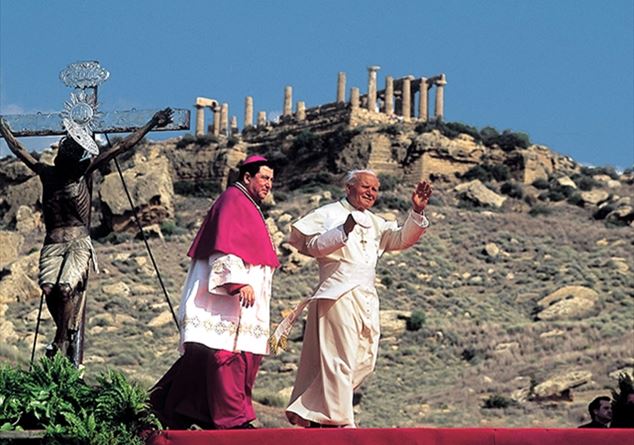Dear readers friendson April 2 of this year, 20 years recur from the death of John Paul II.
Rethinking his figure, Many of us will certainly activate many personal and collective memories. Impossible to doand a round portrait of the Polish Pontiff in a few lines. My first clear memory about him are The television images of the attack in St. Peter’s Square on 13 May 1981. I had luck, thenfrom novice, to participate in a mass in the summer residence of Castelgandolfo, in 1996: I was impressed to see him immersed for a long time in prayer, on his knees, before the celebration. I participated in the 2000 GMG in Rome, When it was already in advance of the disease, but attracted over 2 million young people to Rome (see the services in the newspaper this week on page 32-35). And I had the opportunity to queue, together with an immense crowd, for the last farewell in that April 2005.
John Paul II led the Church in a large span of time. It was the first pope to travel the world far and wide, with 170 apostolic journeys in 129 countries, so much so that he is defined The Pope “Globetrotter”. But He also loved to visit the parishes of Rome. He loved to know people and peoples and certainly A communicator charisma and uncommon human warmth must be recognized. How to forget his “If I’m wrong, you will run to me” When he looked out on St. Peter’s Square after the election, or that exit in Roman dialect with the priests of his diocese: «Damose from Fa ‘! Wanting well! Semo Romans! ».
But beyond the aspects of “color” there are many things that leaves us inheritance. Starting from that invitation to the pontificate beginning to overcome fear, resignation, to have courage, a “Once the doors to Christ open.” Marked by the tragedies of the twentieth century – the Nazism, the Shoah, the communist regimes of the East – The defense of man’s dignity was a fil rouge of his pontificate.
“His Church”, he wrote Andrea Riccardi in 2020«Without ambition to dominance, he wanted to beand the soul and the partner of the peoples and men on the path of liberation, so that hope was not lost ». His criticisms of communism as well as to “unbridled” capitalism are inscribed (see his encyclical “social” Laborem Exercns and Centesimus annus), the commitment for the remission of debt to poor countries (“I speak in the name of those who have no voice”), The mafia complaint in the Valley of the Temples in 1993 And of the war in Iraq wanted by the United States in 2003. But he also gave the churchA The Catechism of the Catholic Church (1997)cultivated and given impulse to ecumenism, it was The first Pope to cross the threshold of a synagogue on April 13, 1986.
It cannot be forgotten The meeting with the representatives of the various faiths on October 27, 1986 in Assisi: it is difficult to imagine Pope Francis to Abu Dhabi without the historical premise of the “spirit of Assisi”. As we cannot forget the requests for forgiveness for the historical faults of the Church for the Jubilee of 2000. I know I have left out much more. Andrea Riccardi recalls: “When it was almost in the end, in 2003, he shouted:” But everything can change! It depends on us too “. And a piece of history and world (starting from the end of the communist regime in Poland), also thanks to him, have really changed. But at the base of everything, there was “a man inhabited by strength and faith”. And from Christian hope. A lesson still valid, in this jubilee year, for a world too, really too, resigned.
(Photo Giancarlo Giuliani/PSP)








